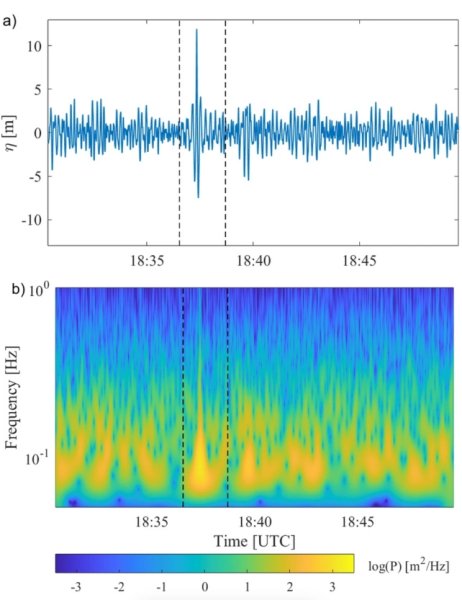The largest killer wave in history appeared out of nowhere, reaching a height of 17.6 meters (video).
For centuries, killer waves were thought to be nothing more than maritime folklore. It wasn't until 1995 that this widespread myth turned into a real phenomenon: on the first day of the new year, a wave nearly 26 meters high suddenly struck an oil platform located 160 kilometers off the coast of Norway, as reported by Science Alert.
The so-called Draupner wave then challenged all previous models of researchers. Decades have passed since then, during which scientists have recorded dozens of other killer waves. Interestingly, some of these have even been detected in lakes.
In November 2020, a massive killer wave was recorded off the coast of British Columbia: it appeared out of nowhere and lifted a solitary buoy off the coast to a height of 17.6 meters. It is worth noting that it took scientists just over two years to definitively confirm the existence of this four-story wall of water and to label it the most extreme killer wave in recorded history.
It should be noted that the wave of 2022 was not the highest in history, but its relative size compared to the surrounding waves was unprecedented. Scientists define a killer wave as any wave that is more than twice the height of the surrounding waves. For example, the Draupner wave reached a height of 25.6 meters, while the surrounding waves were only about 12 meters tall. In comparison, the Yukulét wave was nearly three times larger than its peers.
According to physicist Johannes Gemmrich from the University of Victoria, proportionally, the Yukulét wave is the most extreme killer wave in recorded history. Researchers note that they had previously only observed a few killer waves in open ocean conditions, and nothing of this scale. Moreover, scientists believe that such giant waves likely occur only once every 1300 years or so.

Despite the fact that some killer waves have been recorded by scientists, researchers are still trying to determine how they form. It is believed that understanding the process of how these waves develop will enable scientists to predict where and when they may occur. Typically, scientific investigations involve measuring killer waves in real time, as well as running models of how they rise above the wind.
It is known that the buoy lifted by the Yukulét wave was placed far from the shore along with dozens of others by researchers from MarineLabs — thus they aimed to learn more about the dangers lurking in the depths.
Scientists suggest that even killer waves that form far from shore can still disrupt marine operations, wind farms, and oil rigs. If they are large enough, they can even pose a risk to beachgoers' lives. Fortunately, neither the Yukulét nor the Draupner caused significant damage or loss of life, but other killer waves have.
In a 2020 study, scientists also found that climate change is likely to lead to an increase in the height of killer waves in the northern Pacific Ocean. This indicates that the record for the Yukulét wave may soon be broken. Additionally, an experimental study published last year suggests that these monstrous waves could be four times higher than previously thought possible.